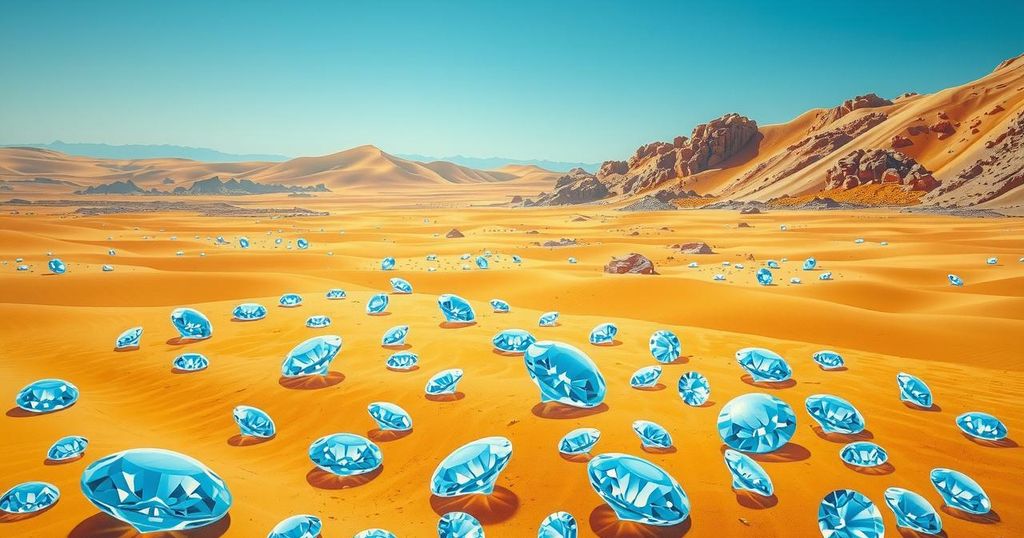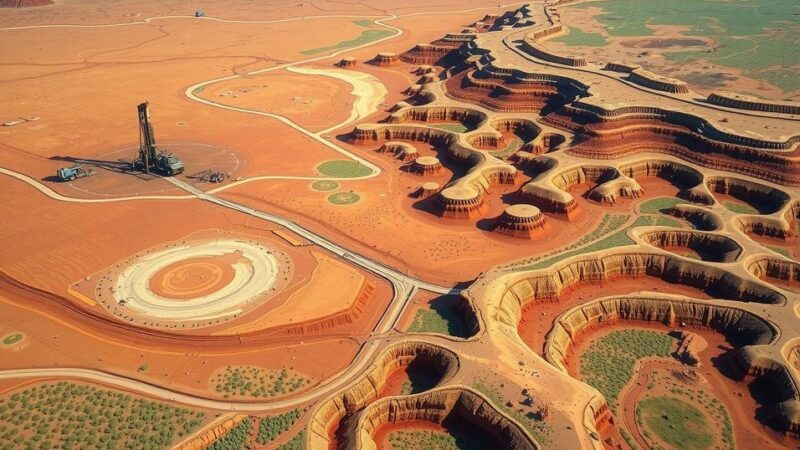Namibia has specialized marine diamond deposits, estimated at 75 million carats, constituting a significant portion of global diamond resources. Production experienced a 4% decline in 2024. De Beers, a leading diamond producer, is exploring a potential demerger with Anglo American. The report indicates shifting consumer preferences favoring natural diamonds and discusses the decline in prices for lab-grown diamonds.
Namibia boasts the richest marine diamond deposits globally, estimated at approximately 75 million carats found over roughly 1.0 million square kilometers of seabed. Notably, marine diamond resources account for about 80% of the output and 94% of the total diamond resources, as detailed in the Anglo American 2024 Integrated Report. This company owns the renowned De Beers, which collaborates with the Namibian government in joint operations, particularly in recovering diamonds from both land (Namdeb) and offshore (Debmarine Namibia) sources.
In 2024, diamond production in Namibia saw a decline of 4%, totaling 2.2 million carats, compared to 2.3 million carats in 2023. This production decrease, particularly a 13% drop from Debmarine Namibia, was a strategic decision. Conversely, planned higher-grade mining and improved recoveries at Namdeb partially offset this reduction. Notably, De Beers contributes to about one-third of the global rough diamond market by value, sourcing primarily from Botswana, Canada, Namibia, and South Africa.
Moreover, De Beers has a significant partnership with the Government of Botswana through Debswana, which operates the Jwaneng mine—one of the most valuable—and the Orapa mine, which boasts substantial total carat resources. Anglo American is exploring a dual-track process, either through a divestment or demerger, to separate De Beers from the parent company. This separation aims to provide strategic flexibility to optimize value for both Anglo American and the government of Botswana, the co-owners of De Beers.
The company anticipates that the separation will enable De Beers to realize the full potential of its ‘origins strategy,’ focused on four key pillars, while striving to reduce operational costs by US$100 million. The report highlights a growing demand from the United States, India, and other nations, which may deplete midstream diamond inventories. Retailers are expected to restock supported by fresh marketing of natural diamonds alongside improving macroeconomic conditions in key markets like China.
However, the wholesale prices of lab-grown diamonds are declining, majorly due to oversupply in markets such as India and China. Consequently, lab-grown diamond retail prices are also falling. This trend is believed to enhance consumer awareness of the crucial distinctions between natural and lab-grown diamonds as U.S. retailers refocus on natural diamond sales due to shifting commercial incentives favoring the latter.
In conclusion, Namibia’s marine diamond deposits are among the richest in the world, contributing significantly to global diamond production. While production has decreased slightly in 2024, strategic mining practices at De Beers aim to enhance efficiency and profitability. The anticipated separation of De Beers from Anglo American seeks to maximize value for both entities, while the market dynamics indicate changing consumer preferences toward natural diamonds over lab-grown counterparts. The future of the diamond industry appears to be shaped by evolving consumer demands and global economic conditions.
Original Source: www.observer24.com.na






